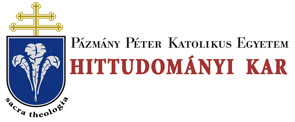Folia Theologica 20. (2009)
Barbour Hugh: The Cosmology of Catholic Worship: Pre-Socratic Sacraments? A Consideration by a disciple of St. Thomas Qauinas
THE COSMOLOGY OF CATHOLIC WORSHIP 11 essential form for the consecration of the matter of the Eucharist, and consequently the validity of Eucharists celebrated using this anaphora had been in doubt. The council announced that after a study of the matter by the Congregation for the Doctrine of the Faith, the anaphora had been judged valid. The guidelines state: "...The words of Eucharistic Institution are indeed present in the Anaphora of Addai and Mari, not in a coherent narrative way and ad litteram, but rather in a dispersed euchological way, that is, integrated in successive prayers of thanksgiving, praise and intercession." Thus it is clear that the classical understanding of the application of form to matter implied in the question is not a requirement for the efficacy of a sacrament as such. Third Objection: from the question of the practically universal daily concélébration in communities of priests. The Constitution on the Sacred Liturgy of the Second Vatican Council admitted for the first time in the history of Christian Worship the practice of frequent sacramental concélébration by several priests in place of the previous practice of individual celebration, and the subsequent implementation of the Council's directive encouraged this practice. This perspective has been retained, without however the previous note of encouragement, in the 1982 Code of Canon Law and in the General Instruction of the editio typica tertia of the post-conciliar Roman Missal. The doctrinal rationale for the practice has always been the unity of the priesthood in celebrating a single Eucharistic sacrifice. This is clear from Sacrosanctum Concilium and its implementation. The opinion held by some preconciliar manualists that in a concelebrated Mass there were, theologically speaking, as many Masses as there are celebrants was thus discarded by the Magisterium.6 Further, the notion that the consequent reduction in the number of celebrations of the Eucharist entailed in the practice of the concélébration of a single Mass by many would limit the general application of the fruits of the sacrifice was not explicitly addressed at the time the new discipline was in6 Cappello, for example, and many other manualists hold the view that there are as many Masses as there are concélébrants. This view is clearly contradicted by the ratio for concélébration found in Sacrosanctum Concilium and the subsequent postconciliar documents.
